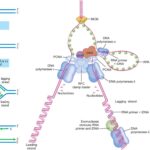How to calibrate a pipette?
How to calibrate a pipette?
Please login to submit an answer.
Calibrating a pipette involves ensuring that the pipette dispenses the correct volume as indicated by its markings. The process typically requires using a high-precision balance and distilled water. To calibrate a pipette, first, clean the pipette thoroughly and attach a properly fitted, clean tip. Next, set the pipette to a specific volume (e.g., 1 mL) and aspirate the liquid into the tip. Dispense the liquid onto a pre-weighed container or weigh boat and record the weight of the dispensed liquid. Since 1 mL of distilled water equals 1 gram, the weight should correspond to the volume set on the pipette. If the measured weight differs from the expected volume, adjustments are made by the manufacturer or technician. This process is repeated for different volumes to ensure the pipette’s accuracy across its entire range. Regular calibration is necessary to maintain the precision and accuracy of the pipette over time.
- Share on Facebook
- Share on Twitter
- Share on LinkedIn
Helpful: 0%




